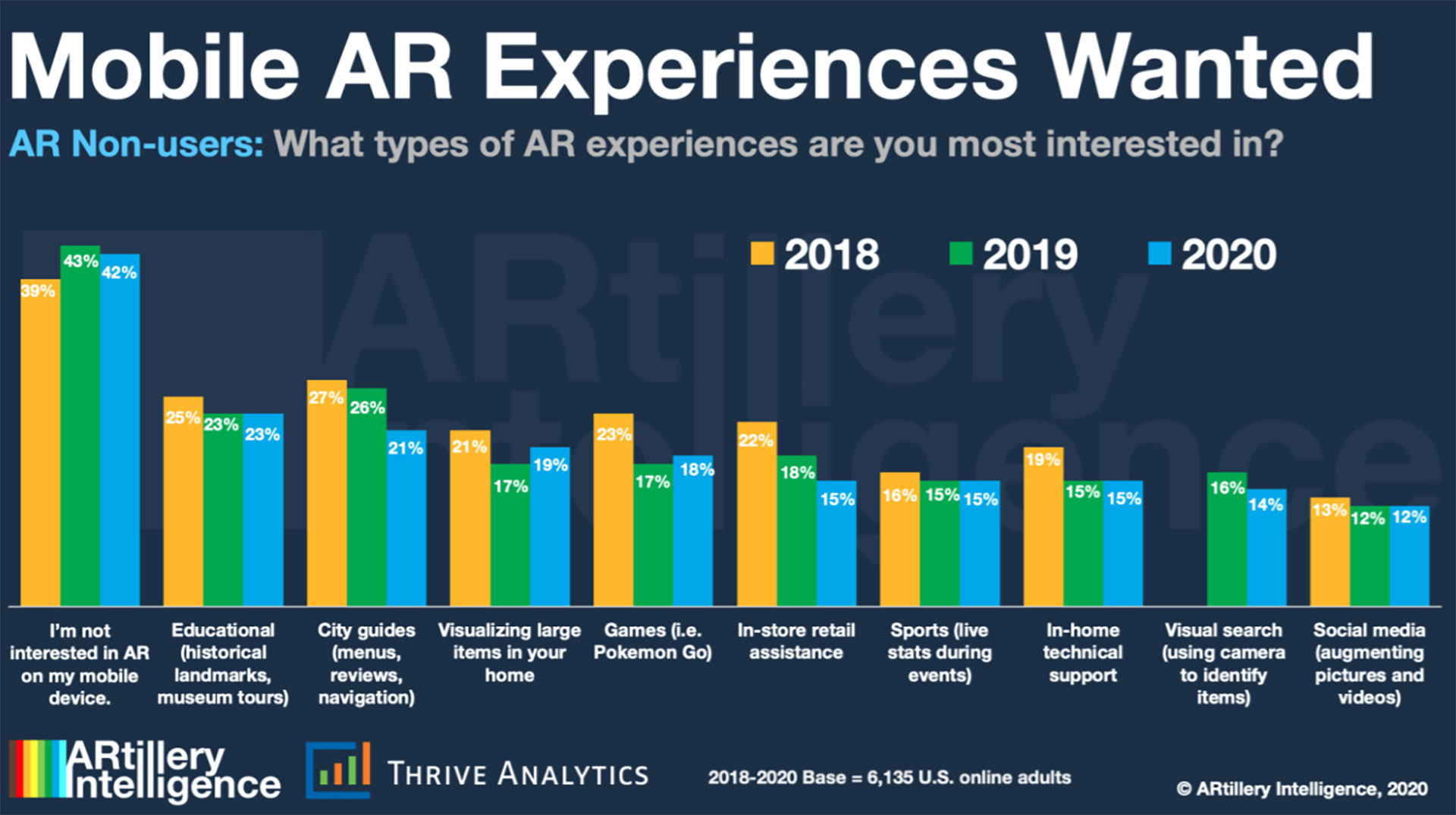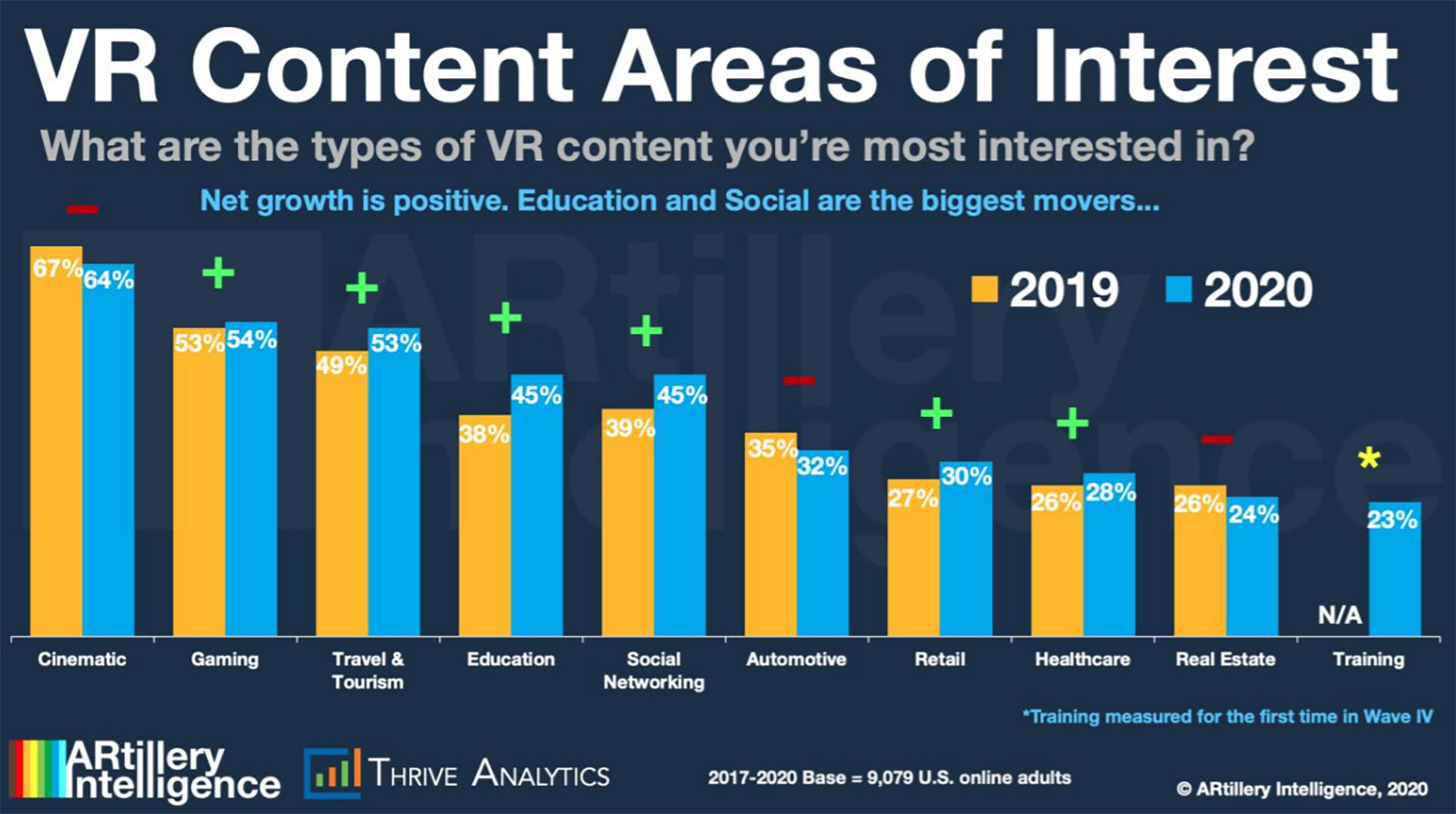Augmented reality (AR) might often get confused as virtual reality (VR). What is the difference between augmented reality and virtual reality? They're both technologies used by a niche industry of entertainment or gaming and are experienced through funny-looking goggles. Well, not quite so.
So how do VR and AR differ?
Virtual reality differs from augmented reality in many ways. The most crucial ones are visual, device, user, experience, access, and content differences. But why is augmented reality better than virtual reality?
The visual difference is that VR creates a whole new, detached virtual experience, while AR adds a virtual overlay to the physical world. In VR experience, you're exploring another world, but in AR, you'll still be in this reality, only in an enhanced one.

The difference in devices is that VR requires you to use those funny-looking goggles, sometimes combined with other equipment, like controllers. AR content is available to consume with any smartphone, which is found in 3 billion pockets around the globe. Because of the device requirement, VR is basically possible to experience only from home. AR content is available to explore from anywhere. Also, with browser-based AR, or WebAR, the reach is better: you don't need to download or install a thing. You're good to go just with your phone and internet connection!
User experience in VR is personal; when in AR, it often is social. Multiple people can explore AR content simultaneously; with VR, each user needs their own equipment. AR content is interactive, giving you a new perspective on this reality.
The difference in content is that in AR, the content is everywhere and is available on your mobile device: through an app or with your browser, but with VR, you'll need to install the virtual content first.
VR and AR usage
ARtillery Intelligence studied VR and AR usage in the U.S. in spring 2020. They wanted to find out who is using them, how they use them, and why some don't.
One might think VR is more popular than AR because it has been around for longer (at least in consumer usage). It's not. The results show that 19% of the people surveyed own or have tried VR, and 26% have been attempting AR. This might be a result of the success of Pokémon Go and Snapchat face filters.
Satisfaction towards AR and VR experiences differ as well. In VR experiences, 55% of the users are either moderately satisfied or extremely satisfied, when in AR, the number is 68% (high or very high satisfaction).
The biggest reason for the non-users to not engage with VR is that they're just not interested. In AR, the reason seems to be confusion. Both technologies have the same core issue: you need to try it yourself before genuinely getting it. So, how to lure in the people who don't understand, and don't even want to?
In the study, the most wanted AR experiences for non-users are educational, history, and item visualization experiences. For VR, the most interesting content areas are cinematic, gaming, and travel & tourism.
 ARtillery Intelligence: AR Usage & Consumer Attitudes, 2020
ARtillery Intelligence: AR Usage & Consumer Attitudes, 2020
 ARtillery Intelligence: VR Usage & Consumer Attitudes, 2020
ARtillery Intelligence: VR Usage & Consumer Attitudes, 2020
It looks very clear: VR is seen as something for entertainment when AR is expected to have a more practical function.
Augmented is better than virtual. Also, by literal definition.
VR applications are great for exploring different places and ideas as if you were actually there. Augmented reality opens up new ways for your devices to be helpful throughout your day by letting you experience digital content in the same way you experience the world. Who doesn't want our everyday pocket devices giving us all the aid possible?
While VR can give you fantastic experiences and opens the possibility to visit other worlds, AR is something to better the only planet we truly have.
AR is a fantastic tool for many things. Not only marketing and branding, but warehouse and process management, infographics, and guides as well. Unlike in VR, AR easily and quickly adds value to a product or a service. You can find answers right where your questions are by fusing immersive content into the real world.
With augmented experiences, you don't have to worry about creating or exploring a whole new reality or another universe. Unless you want to take part in the AR Cloud.
Take on AR and get ready for the future. It is now.
AR is not something to fear or be shy of; it is an essential part of our physical, near-future world. It will be a tool to help us get through our daily lives.
With AR becoming a more conventional medium, the earlier you accept the inevitable change, the better you will adapt and make the most out of the fantastic AR content out there.
Read more about what is augmented reality.


